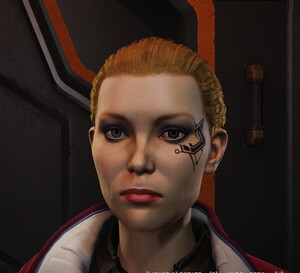The Orbitals
07 Jun 2020Maggie Oz

There are few casualties in space combat.
In a vacuum, you are either alive on a ship or dead in the void
It's rare there are any wounded.
Ground combat in atmosphere though, as it has always been throughout history, is a litany of every form of woe that results from human's inhumanity to each other.
As a result of this, any ground operation in the 34th century is accompanied by a significant number of medical and casualty evacuation units.
Within the Imperial Navy, these units are known as the Orbital CASEVAC Flotilla. All OCF vessels go by the call sign VALKYRIE
Few military units are as revered as "The Orbitals", as the ground troops call them.
In the early days of the Imperial Navy, funds were short for support vessels so the ranks of the OCF were filled by Auxilla Pilots using their own ships.
In more recent times the Imperial Navy supplies Gutamaya Couriers and the fit out , but the pilots are still mainly drawn from the Auxilla as their experience of the trade runs makes for highly skilled and adaptable pilots.
OCF ships are optimised with a good single jump range, tough shields and suped-up thrusters to suit their role of dropping in fast under fire, collecting the casualty then rapidly gaining orbit to jump to the logistics system where the hospital ships are corralled.
Most are also fitted with fuel scoops to avoid the need to dock to refuel, as well as accommodations for the crew and an Emergency Medical Support Suite that contains a range of life-saving equipment that can stabilise a patient from almost any condition.
No ships weapons are fitted, however, crews carry standard Royal Marine small arms.
OCF ships usually carry a crew of 4. Command Pilot, Copilot, Paramedic and a Royal Marine, usually a Senior NCO who is often a seconded member of the elite Special Boat Service. All crew have advanced medical training, the Paramedic being most advanced of all.
A standard mission sees a Valkyrie being dispatched from it's holding orbit to answer a call to evacuate from the surface.
The ship Supercruises to the surface, dropping into Orbital Cruise as late as possible making for the shortest glide phase attainable to lessen vulnerability.
It then vectors into the LZ. Approaches to LZ are almost always done low and fast making maximum use of terrain to shield from enemy fire.
Upon landing the Pilot, or Co-pilot, remains with the ship and preps it for takeoff, the other accompanies the Marine and together they provide close protection for the Paramedic.
After initial first aid is administered to the casualty, it is usual for the flight crew to carry them to the ship while the ground troops cover the extraction.
The ship lifts off the moment the casualty and paramedic are aboard.
It is not unusual for one or two of the flight crew to be left behind, sometimes by accident, sometimes by design if the extra space is needed, but so long as the medic and casualties are abroad, that is all that is required.
These missions are carried out in all gravities, atmospheres, weathers, terrains and times of the day or night.
Crews are graded by stopwatch on every mission from the initial call to docking at the hospital ship.
The fastest time recorded for each day is set as the required standard for the next day.
The number of lives saved by these crews is beyond reckoning.
They are the most highly decorated service of any in the Imperial Military, with more holders of the Empire's highest honour, The Emperor's Cross, than any other arm.
All but a scant few of these awards are posthumous
